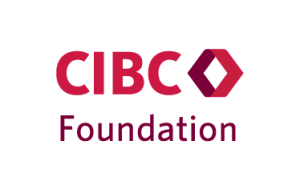Registration for the 2023-24 School Year is Now Closed. You can register early for the 2024-25 year using the link below.
Junior Achievement’s In-School Company Program provides students in Grades 9-12 with the opportunity to explore organizing and operating an actual business enterprise. The Company Program is designed as an educational resource to complement and enhance high school curricula and is designed to be flexibly delivered in classrooms by a teacher in approximately 12 weeks. All program materials are provided by Junior Achievement free of charge to students and schools. Company Program is available in English or French.
Through the program students will gain an understanding of the significance of entrepreneurship and innovation in today’s economy, discover the risks and rewards of starting a business, solve real business challenges, learn to incorporate and capitalize by selling shares, produce and market a product or service, use an excel based record keeping tool to record sales and finances, and more.
Students will not only learn about how businesses function, they also will learn about the structure of the Canadian economic system and the benefits it provides. The program is a great fit in many classes, especially within the O2 program, Entrepreneurship, Business, and Economics courses.
Sponsored by:

Teacher Led Class
Self Directed Program
Volunteer Facilitated Program
English
French
The teacher will act as an advisor, role model, and supervisor within their classroom, helping students launch and run their own business while developing an understanding of business and entrepreneurship through this ‘hands-on’ program. The class can do the program as a group, working with one business idea, or be in smaller groups to work on various business ideas. The multi business concept sometimes works better, allowing students to be more creative and to align their interests with entrepreneurship.
The teacher will help the students organize and assemble information so that they can make sound business decisions, without making those decisions for them.
Students will enjoy thinking innovatively about products or services they could provide and discuss pros and cons of certain ideas. After deciding on a project to pursue they will engage in production, the development of marketing materials, selling, managing of money and ultimately will liquidate and close their business.
JA provides a guide with lesson plans accessed through an online resource portal with videos, slides, and worksheets. JA has designed the program to be flexible and delivered at the teacher’s own pace and will work with teachers to find subject matter experts as guest speakers at the request of the teacher.
Group members will be introduced to the concept of “ideation” as they begin to brainstorm product and service ideas. This phase will allow students to get to know each other and establish expectations about the program. Participants will build their team norms, practice pitching, and learn about prototyping.
Objectives
In this Phase, students will pitch their ideas in their groups and vote on a product/service and then begin to develop their business plan and determine venture funding. The management team will be formed, and everyone will find a role within the company.
Objectives
In this phase, students complete the Business Model Canvas and Mission Statement as they create KPIs and work plans. Success in this phase requires group negotiation, mentorship, and the importance of delegation. Optionally, students can work to incorporate their Business Model Canvas sections into a Lean Business Plan with templates provided.
Objectives
In this phase, all teams begin to implement their plan and make their goals reality. Many activities are ongoing. Students will participate in production, marketing, selling, and financial responsibilities within this phase.
Objectives
In the Achieve phase students begin the process of concluding company operations, liquidating assets, closing books and accounts and preparing to issue final reports.
Objectives
— Wafa Wahhab, Grade 12 Student